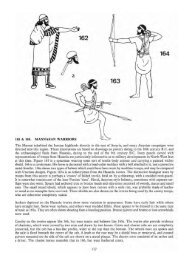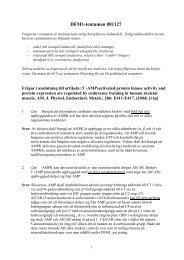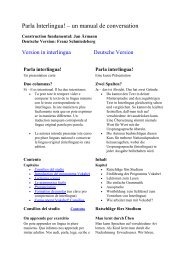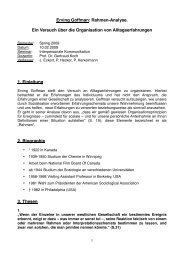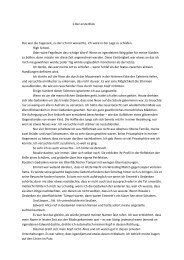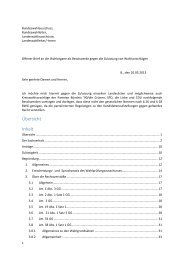lwIP - A Minimal TCP/IP implementation - Wikia
lwIP - A Minimal TCP/IP implementation - Wikia
lwIP - A Minimal TCP/IP implementation - Wikia
Create successful ePaper yourself
Turn your PDF publications into a flip-book with our unique Google optimized e-Paper software.
9 UDP PROCESSING 8.3 Forwarding packets<br />
8.3 Forwarding packets<br />
If none of the network interfaces has the same <strong>IP</strong> address as an incoming packet’s destination<br />
address, the packet should be forwarded. This is done by the function ip forward(). Here, the<br />
TTL field is decreased and if it reaches zero, an ICMP error message is sent to the original sender of<br />
the <strong>IP</strong> packet and the packet is discarded. Since the <strong>IP</strong> header is changed, the <strong>IP</strong> header checksum<br />
needs to be adjusted. The is no need to recompute the entire checksum, however, since simple<br />
arithmetic can be used to adjust the original <strong>IP</strong> checksum [MK90, Rij94]. Finally, the packet<br />
is forwarded to the appropriate network interface. The algorithm used to find the appropriate<br />
network interface is the same that is used when sending <strong>IP</strong> packets.<br />
8.4 ICMP processing<br />
ICMP processing is fairly simple. ICMP packets received by ip input() are handed over to<br />
icmp input(), which decodes the ICMP header and takes the appropriate action. Some ICMP<br />
messages are passed to upper layer protocols and those are taken care of by special functions in the<br />
transport layer. ICMP destination unreachable messages can be sent by transport layer protocols,<br />
in particular by UDP, and the function icmp dest unreach() is used for this.<br />
Transport layer<br />
icmp_dest_unreach()<br />
icmp_input()<br />
Internetwork layer<br />
ip_output()<br />
ip_input()<br />
netif−>output()<br />
Network interface layer<br />
Figure 6. ICMP processing<br />
Using ICMP ECHO messages to probe a network is widely used, and therefore ICMP echo<br />
processing is optimized for performance. The actual processing takes place in icmp input(), and<br />
consists of swapping the <strong>IP</strong> destination and source addresses of the incoming packet, change the<br />
ICMP type to echo reply and adjust the ICMP checksum. The packet is then passed back to the<br />
<strong>IP</strong> layer for transmission.<br />
9 UDP processing<br />
UDP is a simple protocol used for demultiplexing packets between different processes. The state<br />
for each UDP session is kept in a PCB structure as shown in Figure 7. The UDP PCBs are kept<br />
on a linked list which is searched for a match when a UDP datagram arrives.<br />
The UDP PCB structure contains a pointer to the next PCB in the global linked list of UDP<br />
PCBs. A UDP session is defined by the <strong>IP</strong> addresses and port numbers of the end-points and<br />
these are stored in the local ip, dest ip, local port and dest port fields. The flags field<br />
indicates what UDP checksum policy that should be used for this session. This can be either to<br />
switch UDP checksumming off completely, or to use UDP Lite [LDP99] in which the checksum<br />
covers only parts of the datagram. If UDP Lite is used, the chksum len field specifies how much<br />
of the datagram that should be checksummed.<br />
The last two arguments recv and recv arg are used when a datagram is received in the session<br />
specified by the PCB. The function pointed to by recv is called when a datagram is received.<br />
8





